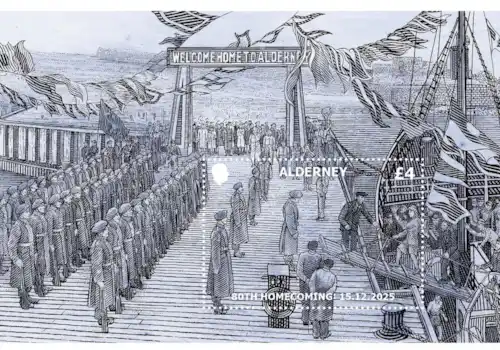03 July 2025
|
This is your guide for all things regional definitive stamps; where they came from, how each place differed and what they are.
During the early years of the reign of Queen Elizabeth II resulted in few exclusive issues. However, in 1958 introduced the regional stamps, meaning that the collectors of definitives have lots to choose from.
What are Regional Stamps?
Regional stamps were designed in 1958 for the Northern Ireland, Scotland, Wales, the Channel Islands of Guernsey and Jersey and the Isle of Man. This was not a new concept for these places. Guernsey, Northern Ireland and the Isle of Man had put forward suggestions for this going as far back as 1935.
The Channel Islands raised this matter again in 1948. Which resulted in two definitives to mark the Third Anniversary of the Liberation of the Channel Islands. These flopped quickly because of the low-value designs and the many sales restrictions.
The public criticised the stamps for not presenting the Channel Island or their liberation within the designs. From the suggestion of the Home Secretary, the artists considered depicting coats of arms to represent the regions. In the end, the project was abandoned altogether.

Eventually in 1958, Queen Elizabeth II gave official approval for the stamps. The regions would be as previously listed while those in England remained with the usage of national definitives.
Suggested article: Stamps on stamps to mark postal anniversary.
The Regional Stamp Designs
The process for selecting designs was quite complex. The committee from each location suggested symbols that represented their own key values. The committees also included artists to design the stamps. They would then have to advise the Postmaster General as to which of the submitted designs would be the most suitable.
The 3d stamps issued by each regions displayed their local colours and included key aspects of their cultures. For example, the design on Guernsey's stamp presents the the Queen's portrait off-centre to the right. The Crown of William the Conqueror in the top left-hand corner and below it, a stylised Guernsey lily.
Another example of this would be how the Scottish stamp includes the Scottish flag in the top right-hand corner. As well as the Welsh stamp including the dragon along the bottom. (Below: left to right: Guernsey, Isle of Man, Jersey, Northern Ireland, Scotland and Wales.)

How much would the regional stamp value at?
Factors such as the specific regions, the condition and whether the stamps are used or unused often affect the value. The regional definitives themselves do not hold a high value and cost a few pounds or less. The full collection of all six stamps can cost between £25-35.
They may not appear to be of high value but do not let this sway you from adding them to your collection. You may find a stamp with errors (such as inverted watermarks or printing errors) and these can be worth significantly more. They are rarer to find but not impossible.
The fall of the 1958 Regionals Definitives
The initial response to the release of the Regionals was mixed. Some suggesting they were too cramped and the designs were too much. The regional definitives struggled to get backing from the public and took over two years to be released. This meant they were only in circulation for 9-12 years in all regions.
Northern Ireland, Scotland and Wales released the 6d and 1s 3d values in the September of 1958. Then after a long break Guernsey, the Isle of Man and Jerseys’ released an additional 2 and a half d stamps in June 1964. From there the new releases stopped and it would not be long before production halted.
Regional stamps for Guernsey and Jersey ceased altogether when both became postally independent on 1st October 1969. The Isle of Man deferred making such a change but followed suit on 5th July 1973. England would eventually have separate regional stamps from the 23rd April 2001.







